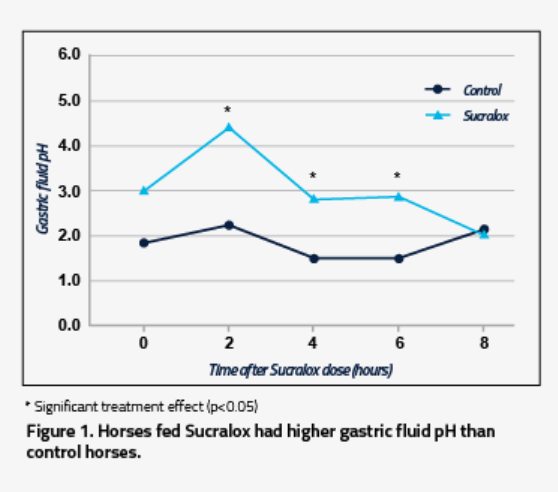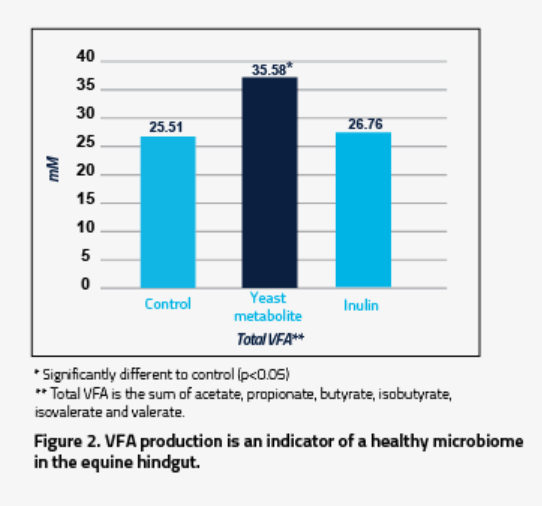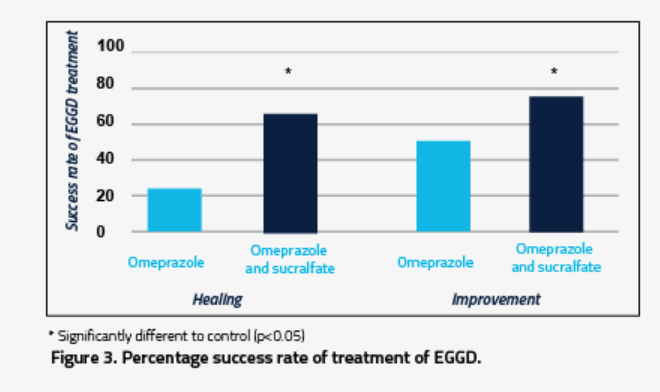Knowde Enhanced TDS
Identification & Functionality
- Animal Feed & Nutrition Functions
- Ingredients
- Lecithin, Yeast, Sucralphate, Aluminum Phosphate
- Technologies
Features & Benefits
- Animal Feed & Nutrition Features
- Highlights
- Firstly, the primary ingredient in Sucralox is sucralfate, a shielding agent that binds to ulcerated areas and safeguards the sensitive lining of the stomach from the damaging effects of gastric acid. In acidic environments like the stomach, sucralfate forms a viscous gel that binds to ulcer craters for more than six hours.
- Sucralfate also stimulates the production of prostaglandin and mucus, which adds two more layers of protection. The physical barrier created by sucralfate, aluminum phosphate, and lecithin keeps the gastric mucosa healthy and aids healing. Aluminum phosphate also absorbs bile acids that can reflux and damage the gastric lining.
- Secondly, Sucralox contains a fast-acting antacid that helps neutralize gastric acid, further protecting the stomach lining from damage and restoring a normal gastric environment
Applications & Uses
- Markets
- Animal Species
- Why Choose Sucralox?
- Provides continuous protection of the gastric and intestinal mucosa through multiple proven coating agents
- Includes an effective antacid to buffer gastric acid
- Contains a yeast metabolite as a postbiotic to support gut morphology, cell health and microbial diversity, resulting in optimal digestive efficiency
- Aids in maintaining a healthy digestive environment for optimal performance and disposition
- Easy-to-feed pellet formulation
- Cost-effective means of reducing the risk of gastric ulceration, especially when used with or after omeprazole
- Feeding Directions
Give a 500-kg horse 100 g in feed two times a day.
Technical Details & Test Data
- Technical Fact
A study conducted at Kentucky Equine Research tested the effectiveness of Sucralox on stabilizing gastric pH in adult horses fed an ulcerogenic or ulcer-inducing diet.

Researchers fed five ulcer-free adult Thoroughbred geldings an ulcerogenic diet along with oral phenylbutazone (1g every 24 hours). Horses in the treatment group were fed 100g of Sucralox twice a day. After 11 days on the diet, the researchers collected gastric fluid from horses before treatment and at 2, 4, 6, and 8 hours after treatment. They measured gastric fluid pH immediately after collection using a handheld pH meter.
Horses fed Sucralox had significantly higher gastric fluid pH than control horses (p<0.05). Higher gastric fluid pH levels may be protective against the formation of ulcers (Figure 1).
Additional Ingredients for Optimal Protection

Sucralox contains a yeast metabolite as a postbiotic to support optimal gut morphology and maintain villi and crypt integrity. Yeast metabolites are high in natural glutamine and are documented to support cell regeneration, assisting in maintaining tight gut junctions, thus reducing the risk of leaky gut syndrome. Postbiotics support microbial diversity, which reduces dysbiosis resulting in improved digestibility as an indicator of better gut function1, as well as volatile fatty acid (VFA) production as an indicator of a healthy microbiome in the equine hindgut (Figure 2).
Equine Glandular Gastric Disease Needs More Than Just Omeprazole

Gastric ulcers in the glandular portion of the stomach are not as common as those in the squamous region but are more difficult to resolve2. EGGD cases are relatively refractory to treatment with only 25% cases healing with omeprazole therapy3 or 50% showing improvement, and some cases becoming more severe after treatment4. However, the combination of omeprazole and 20mg/kg sucralphate twice a day led to a 63% healing rate3 and 75% of cases improved4 (Figure 3). Combined therapy led to significantly greater improvement of glandular lesions.

